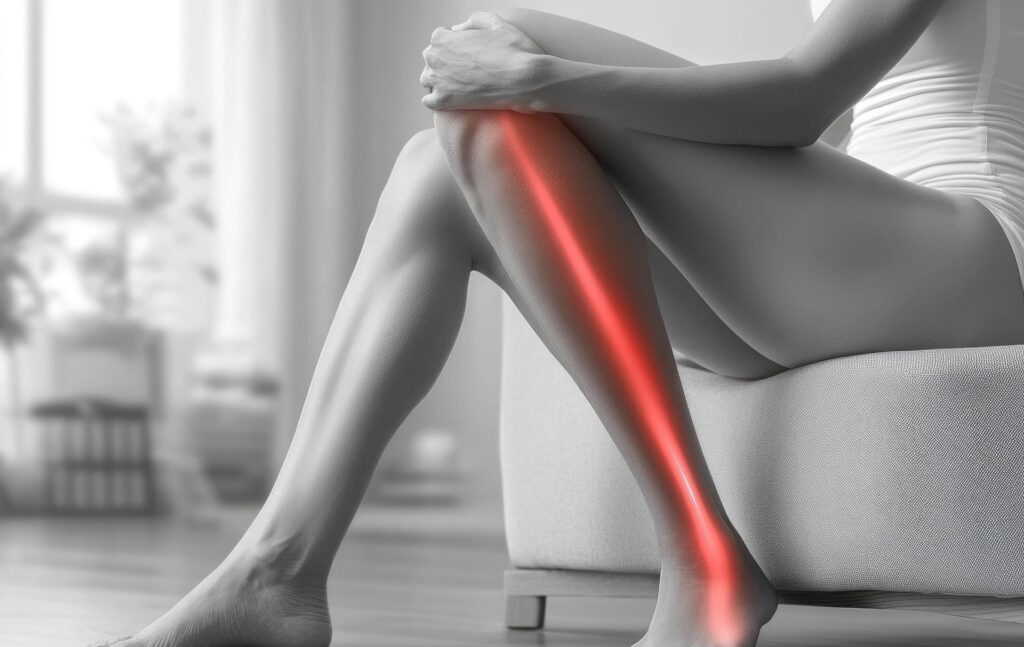
Chiropractic for Sciatica: What You Need To Know
Later in this article, I will give you information about chiropractic for sciatica but firstly let’s find out what sciatic actually is.
What is Sciatica?
Sciatica is a term used to describe pain that radiates along the path of the sciatic nerve, the longest nerve in your body. It runs from your lower back, through your hips and buttocks, and down each leg. Sciatica is a common condition that typically affects only one side of the body.
Other terms used to describe sciatica are
- radicular pain
- nerve root pain
- lumbar radiculopathy
- lumbosacral radiculopathy syndrome.
The pain occurs when something (like a herniated disc, bone spur, or narrowing of the spine) puts pressure on the sciatic nerve. The nerve can then become inflamed and painful.
Most of us have either suffered from sciatica or know someone who has so it can be helpful to understand what it is and how to help with the symptoms.
Symptoms of Sciatica
The symptoms of sciatica can begin suddenly or gradually with varying intensities. I have often heard patients describe the pain as feeling like toothache because nerve pain can be quite a distinctive type of pain. I always suspect the possibility of a sciatic nerve problem when I hear a patient say this.
Sciatica can have a range of symptoms, these can include
- lower back pain
- leg pain, often this feels worse than back pain
- a change in sensation in the leg or foot
- muscle spasms in the back
- a weakness in the leg or foot
A change in feeling in the leg or foot can include
- pins and needles
- numbness
- hot or cold
- burning sensations
- shooting sensations
- sensations that can be hard to describe
This pressure can cause symptoms such as
- Sharp or shooting pain that travels from the lower back or buttock down the leg
- Numbness, tingling, or weakness in the affected leg
- Difficulty moving or controlling the leg
- Pain that worsens with certain movements, like sitting, standing, or coughing.
Understandably, when I see patients with sciatica, they are often desperate to resolve their pain. They may not be sleeping and they may find coping with their day to day activities quite difficult.
Chiropractic for sciatica can be very helpful, especially when self help has failed.
What Can I Do About Sciatica?
It’s important to note that sciatica isn’t a condition itself, but rather a symptom of an underlying issue with the spine or nerve. Treatment usually depends on the related cause, and options can range from physical therapy, including chiropractic, medications, or even surgery in some cases.
According to the National Institute for Clinical Excellence (NICE), sciatica may take weeks or months to resolve and there is a likelihood of recurrence. With this in mind, manual therapy such as chiropractic might be an attractive option to consider on the basis that it is an active intervention that might help with a swifter recovery.
Self help is based on keeping active and returning to work with appropriate support as soon as possible as outlined in the charity Backcare’s leaflet (see here).

Chiropractic for Sciatica
Chiropractos are trained to diagnose and treat problems relating to the spine. Accordingly, you will be assessed to establish a diagnosis of sciatica and then treated using appropriate methods for your individual presentation.
Spinal Adjustments
Chiropractors use spinal manipulations (adjustments) to correct misalignments in the vertebrae of the spine, particularly in the lower back. These adjustments can help relieve nerve compression, improve spinal function, and reduce pain.
Mobilisation
In addition to spinal adjustments, chiropractors may use gentle mobilization techniques to increase the range of motion in the spine and reduce stiffness, which can ease the pressure on the sciatic nerve.
Soft Tissue Therapy
Chiropractors may also work on soft tissue techniques like massage or myofascial release to address muscle spasms and tightness that could be contributing to sciatica.
Posture and Lifestyle Advice
Since bad posture, prolonged sitting, or improper lifting can contribute to sciatica, chiropractors often offer advice on improving posture, ergonomic adjustments, and exercises that can strengthen the muscles supporting the spine.
Stretching and Strengthening Exercises
Chiropractors may recommend specific exercises to stretch tight muscles and strengthen weak ones, especially in the lower back, abdomen, and legs, which can support long-term relief and prevent recurrence.
Take Action

Now that you have considered chiropractic for sciatica, it is time to take the next step either with a free advisory consultation or start your recovery with a first visit.
Looking forward to connecting
Vanessa
